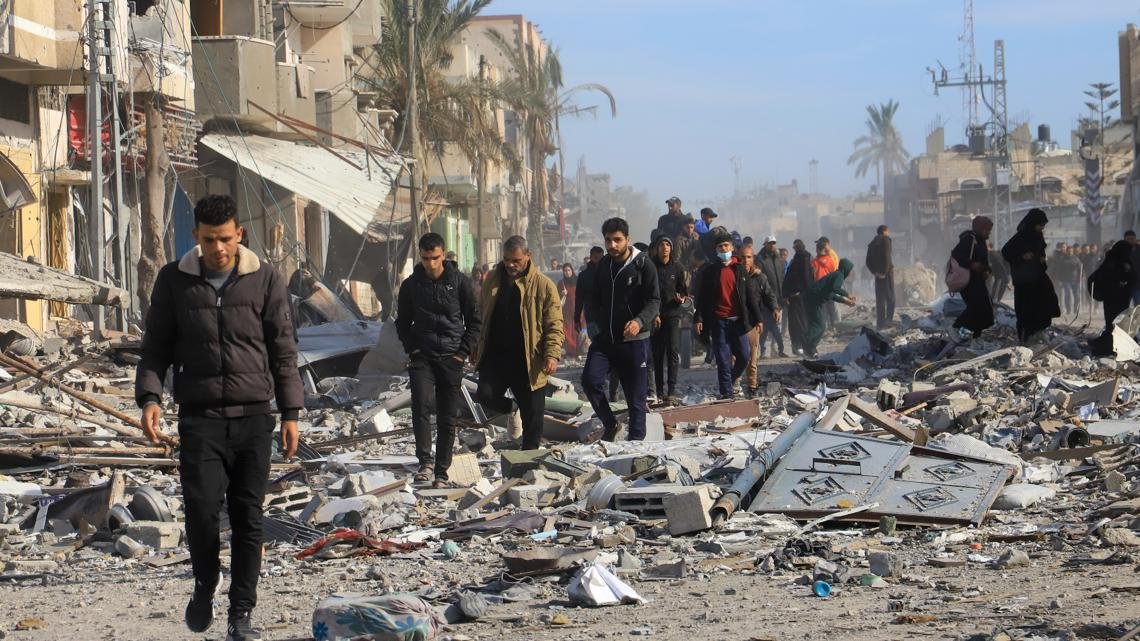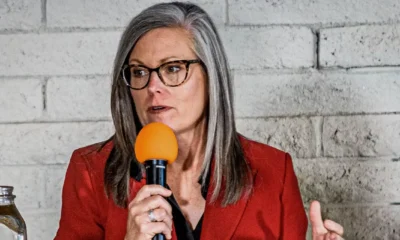Business
Gaza Ceasefire Unfolds Amid Intensified Media Clash Over Hostage Exchanges

LONDON, UK — Arbel Yehoud anxiously approached freedom, yet her expression revealed deep fear as masked Hamas fighters surrounded her. In a distressing scene, she pleaded with her captors for a chance to escape, highlighting the precarious nature of the ceasefire deal implemented on January 19.
Families in Israel watched the handover live, breathless and anxious. Yehoud ultimately reached safety, leading to a triumphant reunion with her parents, captured by government cameras for the public’s eye.
The recent exchanges of hostages for prisoners have become a psychological warfare tool, leveraged by both Israel and Hamas to shape public perception. Each side portrays itself as the virtuous party while demonizing the other. Yet, the chaotic release of Yehoud vividly illustrated the fragile ceasefire arrangement.
Danielle Gilbert, a hostage-taking expert from Northwestern University, remarked, “All of this was filmed and intentionally shared.” Images carry emotional weight, compelling public sympathy and urgency in negotiations.
Since the kidnapping of Charles Lindbergh’s child in 1932, visuals of hostages have played a critical role in negotiations, charged with emotional intensity. Iconic images from historic hostage crises serve as reminders of this power, such as the 1979 American hostages in Iran and Wall Street Journal reporter Daniel Pearl before his tragic death in 2002.
The conflict between Israel and Hamas escalated dramatically on October 7, 2023, when Hamas militants breached Israeli borders, leading to an estimated 1,200 deaths and the abduction of about 250 individuals. Media coverage, including direct streams from the ground, has profoundly affected public sentiment and international views related to the conflict.
Public opinion, influenced by visual narratives, has significant repercussions. Disinformation spread rapidly during the conflict, alongside a notable rise in antisemitism globally. The International Criminal Court issued arrest warrants against Israeli officials, underscoring the contentious environment in which Netanyahu operates.
Israel has decisively used media to depict Hamas as the aggressor in this conflict. Shortly after the attacks, they produced a film, “Bearing Witness,” detailing the violent outcomes of the assault and screened it for prominent figures worldwide, reinforcing their stance.
Hamas, meanwhile, has transformed each hostage release into a spectacle, portraying a narrative of triumph and control over Gaza after extensive fighting. It has reported thousands of casualties in Gaza due to Israeli airstrikes, complicating the humanitarian landscape amid the ceasefire.
Amid the images of joyous reunions shown on Israeli television, disconcerting questions arise regarding the true state of control within Hamas. Netanyahu condemned the recent scenes, requesting assurances from international mediators regarding future hostage safety protocols.
The recent release, executed smoothly, showcased Hamas’s organizational abilities. Three Israeli hostages were released on camera, presenting certificates reading “release order,” enhancing the spectacle of their liberation. Meanwhile, the emotional reactions of families were captured by the media, depicting a stark contrast between relief and ongoing suffering.
Though these moments provide a glimmer of hope, they also reflect the harsh realities families face. For instance, Yarden Bibas, one of the released hostages, was visibly exhausted but reunited joyfully with family. However, the fates of his relatives remain uncertain, signaling the persistent pain beneath the surface of these narratives.
The dilemma of these imaging practices promotes a complex landscape, where the absence of images can speak volumes about suffering yet unknown. As families seek closure amidst this conflict, the overarching dynamics of power, propaganda, and public emotion remain at play.
Reported by Associated Press writer Josef Federman from Jerusalem.


















